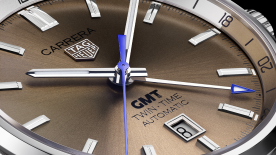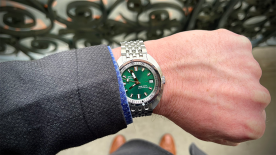This June, the Fondation de la Haute Horlogerie (FHH), under the guidance of its Cultural Council chaired by Franco Cologni, published its “Livre Blanc de la Haute Horlogerie”, a white paper that sets out its own definition of a concept that is often rather loosely interpreted, to say the least. Franco Cologni offered some background to the exercise, which took 46 independent experts from all over the world three years to complete. “This project is the result of discussions going back to the 1991 creation of the Salon International de la Haute Horlogerie (SIHH), which was a marketing concept intended to differentiate it from Baselworld. At the time, however, no one was able to define Haute Horlogerie. In 2005, when Fabienne Lupo took over the SIHH, we wanted to develop the idea, so we started looking into a definition, and devoting some resources to it, without any political influence. The White Paper is the result of honest, serious and professional work, which clearly establishes the evaluation criteria that constitute our interpretation of Haute Horlogerie, without wishing this to be set in stone.” The ambitious and extremely delicate definition and selection process (22 of the brands examined did not fulfil the criteria) was led by an experienced steering committee comprising Jasmine Audemars, Aurel Bacs, Franco Cologni, Fabienne Lupo and Pascal Ravessoud (secretary general of the Cultural Council).
Values and criteria
According to the definition given in the White Paper: “Haute Horlogerie means watchmaking excellence, the symbiosis of the watchmaker’s craft with the applied arts.” How did they arrive at this summary? By methodically analysing the available data and information on the 86 brands from four sectors that were approached, evaluating them in seven areas of expertise on the basis of 28 discrete and largely quantifiable criteria, resulting in some 15,000 scores being attributed by the 46 experts. The seven areas evaluated by the experts were R&D and manufacturing, style and design, DNA and history, distribution and after-sales service, collectors, brand image and communication, and training. Brands were placed in one of four categories: historic brands (over 50 years old), contemporary brands, luxury brands and artisan creators. Fabienne Lupo notes that the companies were all invited to provide additional information to complement the experts’ evaluations, but their participation was not obligatory. In order to be considered an Haute Horlogerie brand, a minimum score of 6 out of 10 was required. The marks are confidential, but each company can ask to find out its own score, and discuss it with the Cultural Council. Any brands scoring between 5.7 and 6.3 were subject to a second vote by all the experts, to ensure that the results were reliable. The best mark achieved by any brand was 9.1!
Brand image and communication
Let’s look at one area of expertise a little more closely – the sixth: brand image and communication, an area WorldTempus knows something about. The four evaluation criteria for this section are: respect for the brand (global perception), identity of its products, visibility of digital communication, and ethical approach. The white paper states: “In the world of luxury, brand image relies on a coherent communication strategy in keeping with the exclusivity of the products. In this respect, adaptation to the new media landscape is a challenge to be met. In Haute Horlogerie, authenticity of communication is a key factor in successfully conveying the values that underpin the brand and its products.” According to the criteria, “communication experts evaluate the level of respect for the brand, the perception of the products’ identity and DNA, and analyse the consistency of the brand’s institutional communication internationally.” Interestingly, the scores obtained in this area were generally better than those for after-sales service. Go figure.
According to Pascal Ravessoud, the exercise will be repeated in two or three years. We look forward to some interesting discussions!
You can see here which brands passed the definition of Haute Horlogerie, by category.





